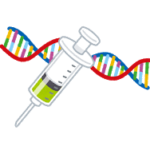2023-12-07 カロリンスカ研究所(KI)
◆通常のマンモグラフィプログラムでは、固定の年齢と時間間隔でのスクリーニングが行われているが、AIモデルは微細な画像の変化を検出し、補完的な検査が必要な女性を特定するための新しいリスクモデルを提供している。この研究の次の段階では、ヨーロッパで臨床研究が行われ、AIモデルに基づいて異なるリスク評価を受けた女性に異なる治療を提供する可能性が検証される予定。
<関連情報>
- https://news.ki.se/ai-can-identify-women-with-high-risk-of-breast-cancer-in-screening-examinations
- https://www.thelancet.com/journals/lanepe/article/PIIS2666-7762(23)00217-X/fulltext
個別化された乳がん検診のための画像由来AIベースの短期リスクモデルの欧州での検証 – ネステッドケースコントロール研究 European validation of an image-derived AI-based short-term risk model for individualized breast cancer screening – a nested case-control study
Mikael Eriksson,Marta Román,Axel Gräwingholt,Xavier Castells,Andrea Nitrosi,Pierpaolo Pattacini,Sylvia Heywang-Köbrunner,Paolo G. Rossi
The Lancet Regional Health – Europe Published:December 06, 2023
DOI:https://doi.org/10.1016/j.lanepe.2023.100798

Summary
Background
Image-derived artificial intelligence (AI)-based risk models for breast cancer have shown high discriminatory performances compared with clinical risk models based on family history and lifestyle factors. However, little is known about their generalizability across European screening settings. We therefore investigated the discriminatory performances of an AI-based risk model in European screening settings.
Methods
Using four European screening populations in three countries (Italy, Spain, Germany) screened between 2009 and 2020 for women aged 45–69, we performed a nested case-control study to assess the predictive performance of an AI-based risk model. In total, 739 women with incident breast cancers were included together with 7812 controls matched on year of study-entry. Mammographic features (density, microcalcifications, masses, left-right breast asymmetries of these features) were extracted using AI from negative digital mammograms at study-entry. Two-year absolute risks of breast cancer were predicted and assessed after two years of follow-up. Adjusted risk stratification performance metrics were reported per clinical guidelines.
Findings
The overall adjusted Area Under the receiver operating characteristic Curve (aAUC) of the AI risk model was 0.72 (95% CI 0.70–0.75) for breast cancers developed in four screening populations. In the 6.2% [529/8551] of women at high risk using the National Institute of Health and Care Excellence (NICE) guidelines thresholds, cancers were more likely diagnosed after 2 years follow-up, risk-ratio (RR) 6.7 (95% CI 5.6–8.0), compared with the 69% [5907/8551] of women classified at general risk by the model. Similar risk-ratios were observed across levels of mammographic density.
Interpretation
The AI risk model showed generalizable discriminatory performances across European populations and, predicted ∼30% of clinically relevant stage 2 and higher breast cancers in ∼6% of high-risk women who were sent home with a negative mammogram. Similar results were seen in women with fatty and dense breasts.
Funding
Swedish Research Council.


